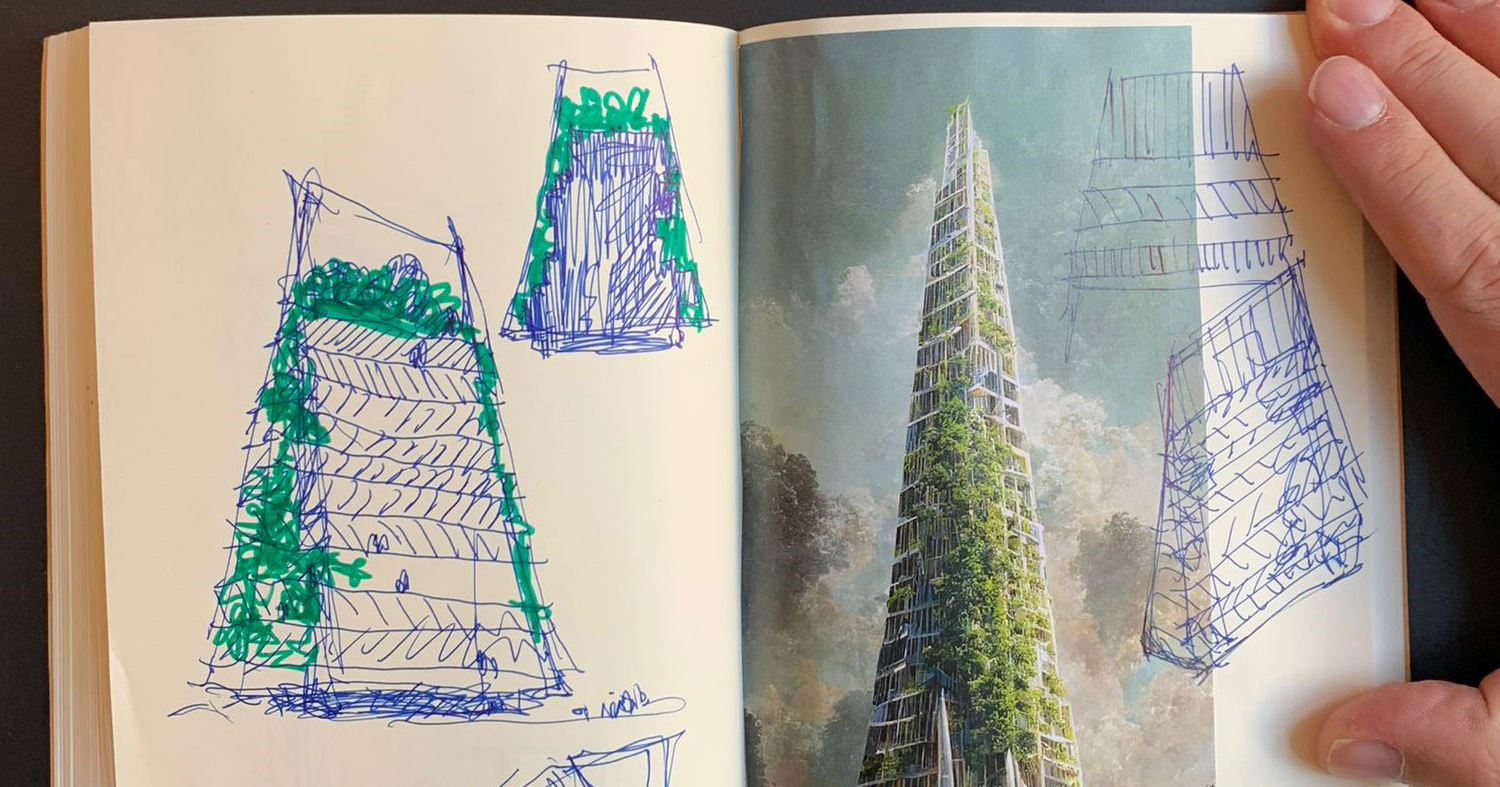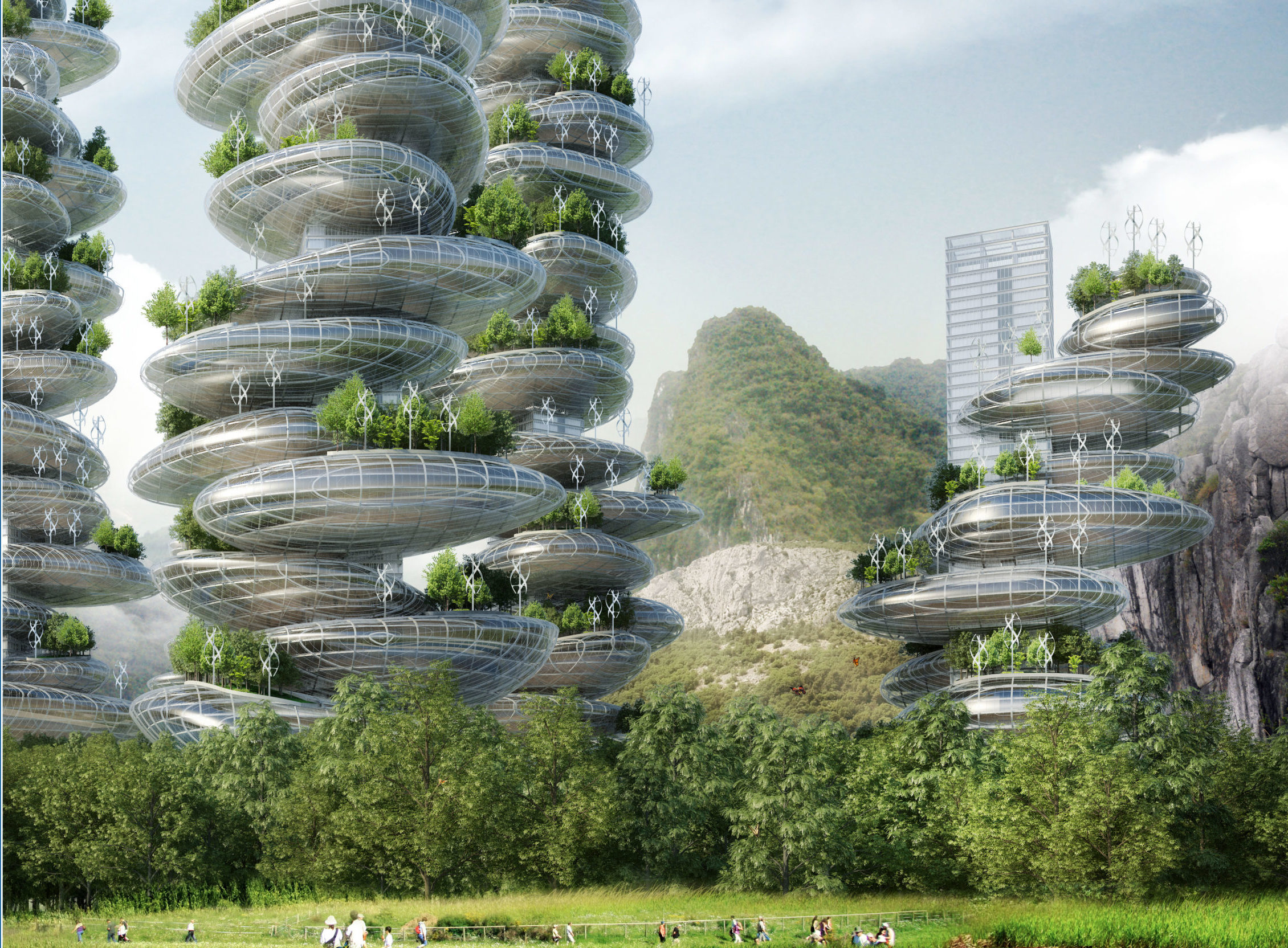Nuno Fontarra is Partner at Mecanoo, where he has worked as an architect since 2002. Highly creative, innovative and flexible, Nuno has propelled the conceptualization and design development of many of Mecanoo’s most innovative and sculptural projects.
Sketching by hand has always been the most powerful tool for architects. Our hands are still the best way to connect with our brains. We use sketches not only as a fast way to communicate ideas with others but also as a dialogue with ourselves.
Lately, I’ve been using AI as a sketchbook and library of ideas. I used to keep my sketchbook close so I could quickly jot down ideas and concepts for later use. Now that process is also done with AI by simply typing ideas and concepts into my phone via Midjourney. Just like hand sketching, it’s become a dialogue. As your idea starts to take form, you begin to see it more clearly with each drawing. Sometimes the final project is exactly what you had in mind when you started, but more often it is transformed through feedback.
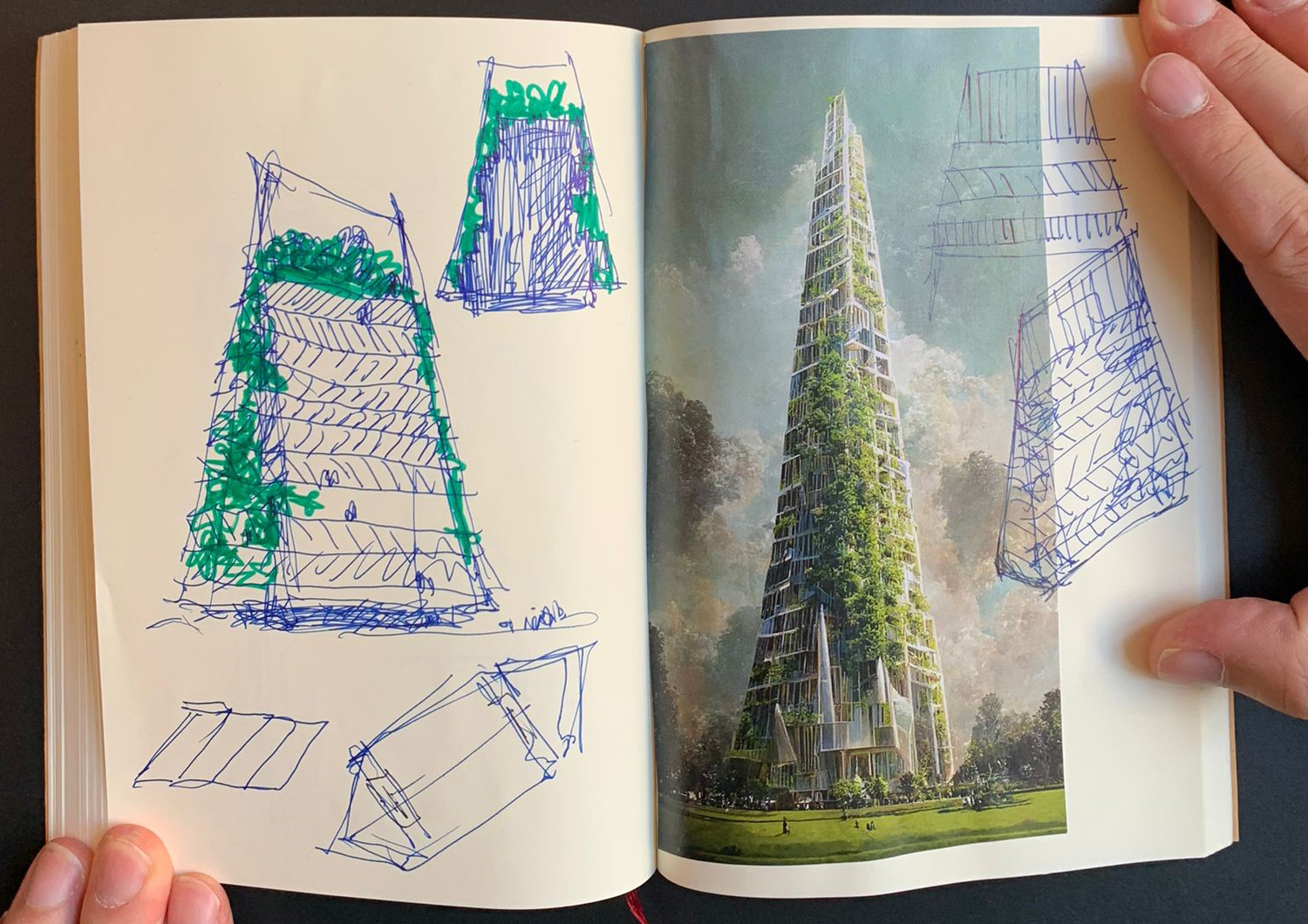 Siza Vieira, a renowned architect, once said that architects copy from their memories. If you don’t fill your head with experiences and memories of past architecture, you are limiting your capacity for finding new solutions. It’s no surprise that artificial intelligence is starting to play a role in design projects. Even in its infancy, AI is able to produce a dialogue with architects, exchanging ideas and memories from a universal database.
Siza Vieira, a renowned architect, once said that architects copy from their memories. If you don’t fill your head with experiences and memories of past architecture, you are limiting your capacity for finding new solutions. It’s no surprise that artificial intelligence is starting to play a role in design projects. Even in its infancy, AI is able to produce a dialogue with architects, exchanging ideas and memories from a universal database.
The process of creating with AI is so fast that it allows for infinite interactions. Accidents happen and the number of ideas keeps multiplying, the creation path keeps bifurcating and is a nonstop world of possibilities.
It’s interesting to see that the first results generated by the AI were very similar. There was a certain domination of organic and parametric imaginary in the architectural exploration. With the evolution of the technology, and as we architects adapted and learned how to control this new tool, results have become more diversified and the solutions achieved have become less formal and tend to explore more possibilities.
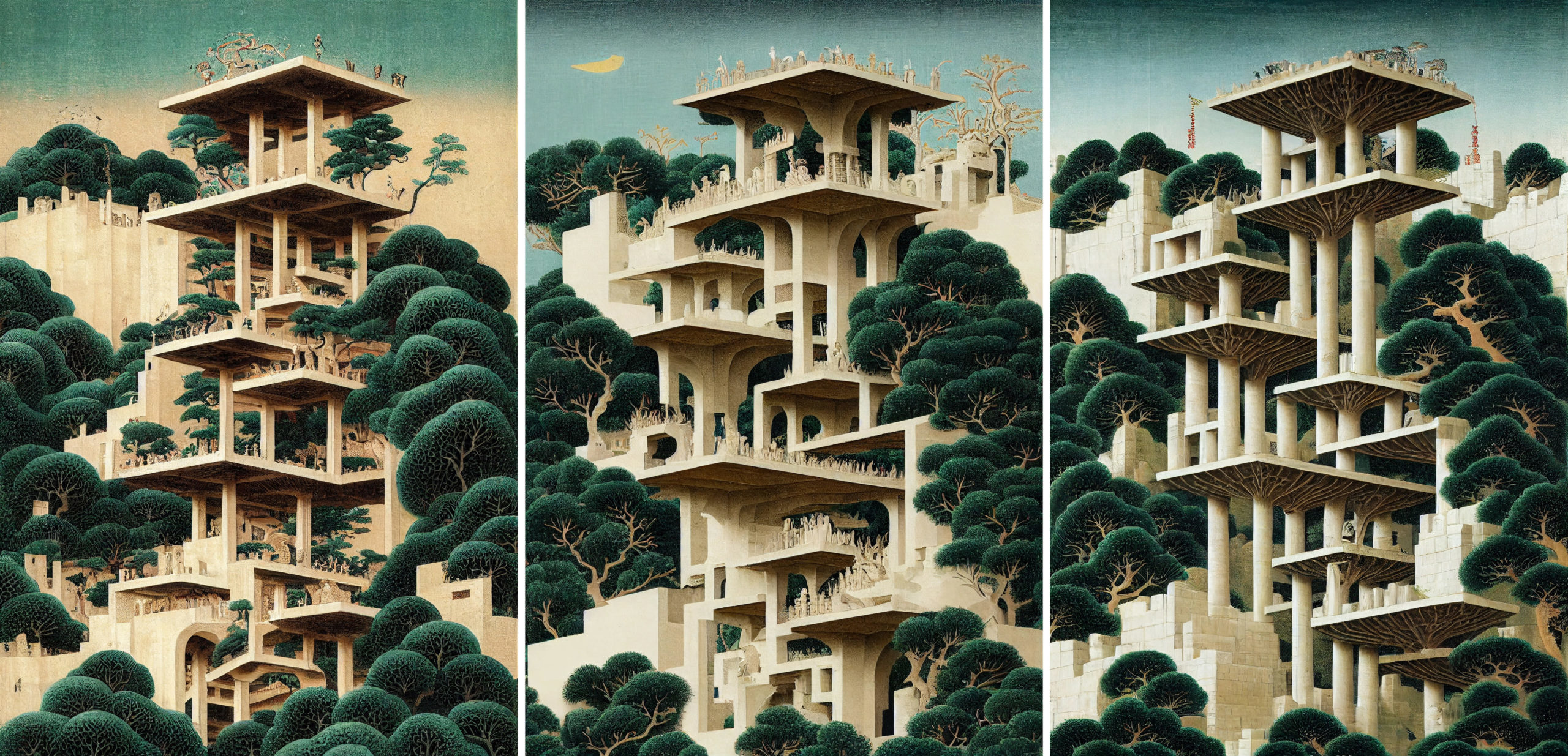 The algorithm’s ability to compose and create artistic proposals is quite astonishing. Not all the images it produces are valid architectural studies, but most are visually very strong, capable of sparking imagination.
The algorithm’s ability to compose and create artistic proposals is quite astonishing. Not all the images it produces are valid architectural studies, but most are visually very strong, capable of sparking imagination.
Text-to-image software literally does what its name suggests. Words representing different concepts are provided as input. The AI combines and synthesizes those ideas into a single image. Architecture is much more than an image and cannot be reduced to words. The capacity of the software to combine concepts and the poetic quality of the output makes it a fascinating tool for starting ideas and an invaluable tool for starting to fill the “paper,” which is always the first challenge for an architect.
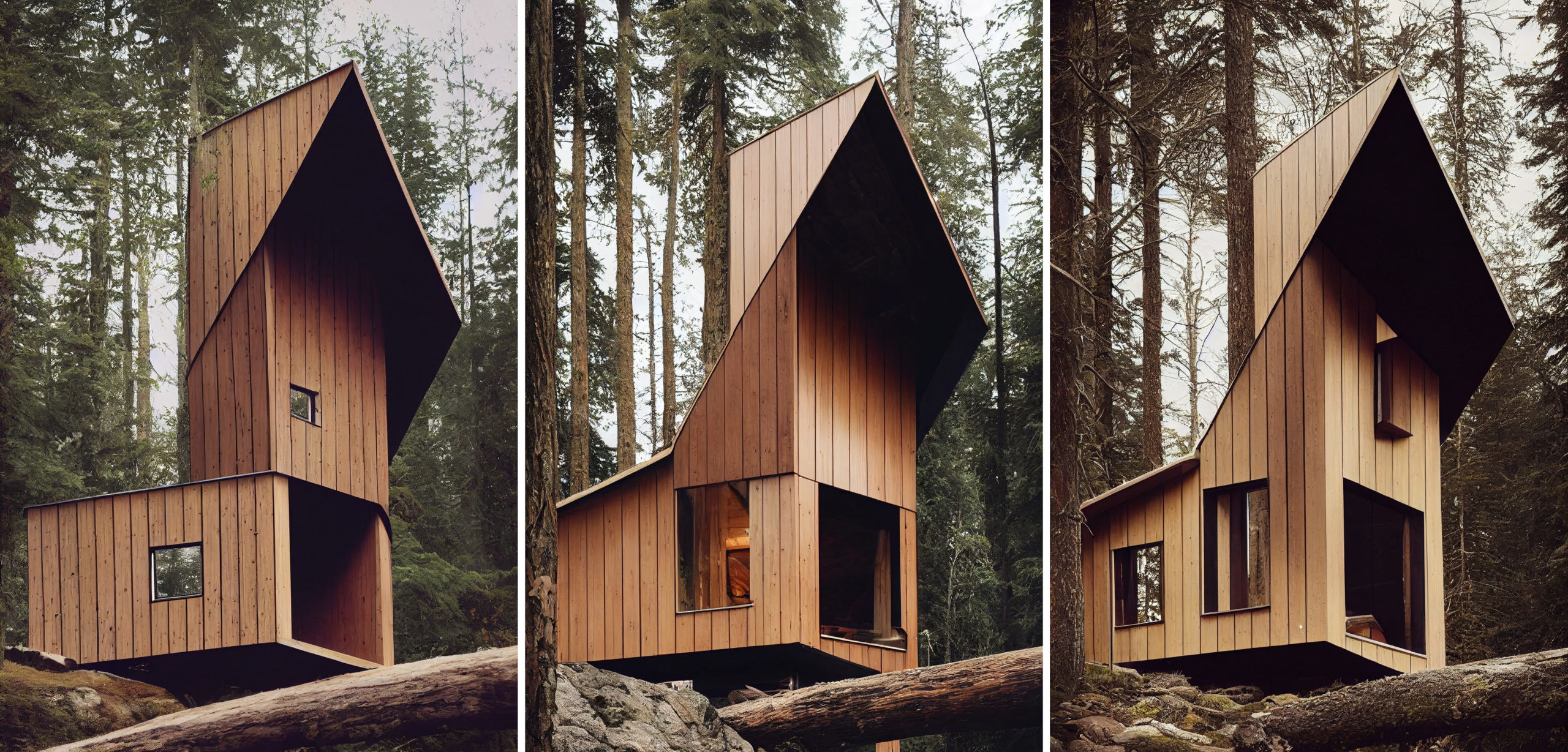 I prefer to develop the projects through traditional hand-drawing, but we all know that many practices rely on having an army of unpaid interns producing endless variations in the hopes of finding something satisfying. AI can now easily generate design variations in seconds.
I prefer to develop the projects through traditional hand-drawing, but we all know that many practices rely on having an army of unpaid interns producing endless variations in the hopes of finding something satisfying. AI can now easily generate design variations in seconds.
It is too early to say what impact these new tools will have on our work as architects. At the moment, the text-to-image interface is quite effective and direct, using words. However, in order to be an even more precise tool the interface will need to evolve. Obviously, AI will not replace the architect, but in the near future it will allow you to get a team’s day of work done before breakfast.
The jury's votes are in — Architizer is proud to present the winners of the 2025 Vision Awards! Join the program mailing list and continue celebrating the world's best architectural representations by clicking here.
